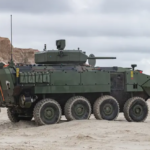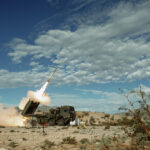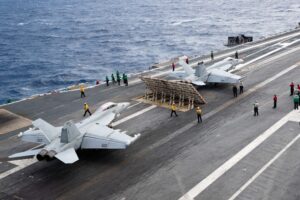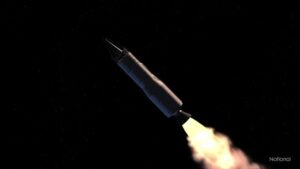
 The Senate Appropriations Committee announced today that the committee has approved the fiscal 2015 defense spending bill, the last of the four committees to do so. The committee tells us it will post the full report on its website either Friday or Monday, so we’ll break down the bill in detail early next week and highlight major movements — including the addition of a Joint High Speed Vessel and a C-130, funding for another LPD-17, and money to continue Tomahawk production. But today, we take a look at the DDG-1000 program and some key language that was added.
The Senate Appropriations Committee announced today that the committee has approved the fiscal 2015 defense spending bill, the last of the four committees to do so. The committee tells us it will post the full report on its website either Friday or Monday, so we’ll break down the bill in detail early next week and highlight major movements — including the addition of a Joint High Speed Vessel and a C-130, funding for another LPD-17, and money to continue Tomahawk production. But today, we take a look at the DDG-1000 program and some key language that was added.
It’s been years since the Pentagon officially procured the last of three DDG-1000s, and even in fiscal 2015 the Navy is shelling out large amounts of money for the program, requesting $419.5 million for procurement and $202.5 million for research and development — well over last year’s totals. That didn’t escape the attention of Senate appropriators. In an amendment proferred by Sen. Susan Collins (R-Maine) — Maine is where the ship is built — the committee noted the price tag for all three ships now stands at a whopping $12 billion, which is a 34.4 percent increase since 2009 when the third and final ship was procured.
The program had already been restructured in 2010 after breaching Nunn-McCurdy cost thresholds due to the Navy’s decision to slash the program from 10 to three ships. But the costs keep rising, and the amendment notes that the Navy has added $452 million to fiscal years 2015 through 2017 for the program in its most recent budget submission.
As a result, the panel believes it’s time the Navy got a handle on the program.
“Given the steadily rising costs of the DDG-1000 program since authorization and appropriation of the third and final ship of the class,” the amendment states, “the committee believes the Navy and the congressional defense committees would be well-served with an updated Independent Cost Estimate.”
The language directs the director of the Pentagon’s Cost Assessment and Program Evaluation (CAPE) office to provide an updated Independent Cost Estimate for the DDG-1000 program with next year’s budget submission.
Proponents of the program have made waves toward considering re-opening the DDG-1000 line in the past. A January 2012 Government Accountability Office report questioned the Navy’s decision to truncate the program and restart the DDG-51 program, arguing that the service hadn’t considered advantages the DDG-1000 had such as stealth, and the agency recommended a more thorough analysis of alternatives (the Navy disagreed with this suggestion). Last year’s defense authorization act included language that would require the Navy to at some point submit a report providing an updated comparison of the costs and risks of acquiring DDG-1000 versus DDG-51 ships equipped for ballistic missile defense.
However, at $4 billion per ship and rising, DDG-1000’s costs have so far extinguished even the faintest glimmer of hope for a comeback for the program.













